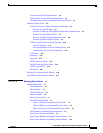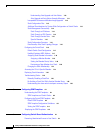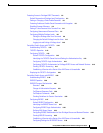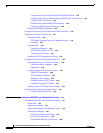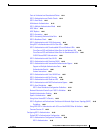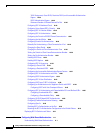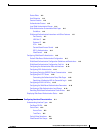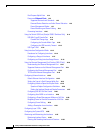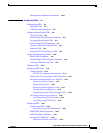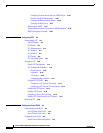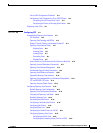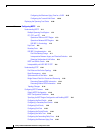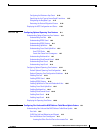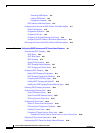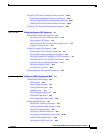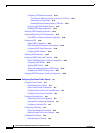
Contents
xv
Catalyst 2960 and 2960-S Switch Software Configuration Guide
OL-8603-09
Shutting Down and Restarting the Interface 12-39
CHAPTER
13 Configuring VLANs 13-1
Understanding VLANs 13-1
Supported VLANs 13-2
VLAN Port Membership Modes 13-3
Configuring Normal-Range VLANs 13-4
Token Ring VLANs 13-5
Normal-Range VLAN Configuration Guidelines 13-6
Configuring Normal-Range VLANs 13-6
Default Ethernet VLAN Configuration 13-7
Creating or Modifying an Ethernet VLAN 13-8
Deleting a VLAN 13-9
Assigning Static-Access Ports to a VLAN 13-9
Configuring Extended-Range VLANs 13-10
Default VLAN Configuration 13-11
Extended-Range VLAN Configuration Guidelines 13-11
Creating an Extended-Range VLAN 13-11
Displaying VLANs 13-13
Configuring VLAN Trunks 13-13
Trunking Overview 13-13
IEEE 802.1Q Configuration Considerations 13-14
Default Layer 2 Ethernet Interface VLAN Configuration 13-15
Configuring an Ethernet Interface as a Trunk Port 13-15
Interaction with Other Features 13-15
Configuring a Trunk Port 13-16
Defining the Allowed VLANs on a Trunk 13-17
Changing the Pruning-Eligible List 13-18
Configuring the Native VLAN for Untagged Traffic 13-18
Configuring Trunk Ports for Load Sharing 13-19
Load Sharing Using STP Port Priorities 13-19
Load Sharing Using STP Path Cost 13-21
Configuring VMPS 13-22
Understanding VMPS 13-23
Dynamic-Access Port VLAN Membership 13-23
Default VMPS Client Configuration 13-24
VMPS Configuration Guidelines 13-24
Configuring the VMPS Client 13-25
Entering the IP Address of the VMPS 13-25



